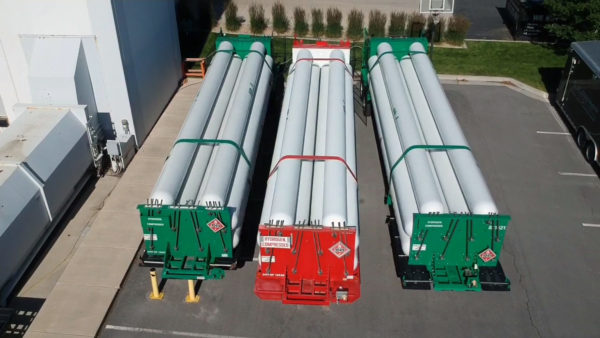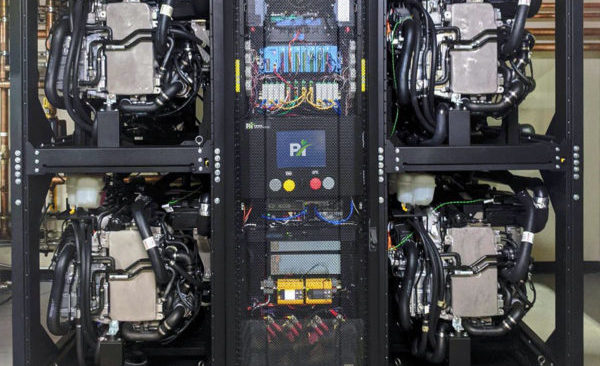U.S. software giant Microsoft this week announced the successful trial of a hydrogen fuel cell system to power one of its data centers. The company said the 250 kW pilot project provided proof of concept and, beyond back-up power, Microsoft said it has a much bigger vision of playing a leading role in the growth of a ‘hydrogen economy.’
Working with Utah-based developer Power Innovations, Microsoft began testing the pilot system in September and achieved a milestone last month when the fuel cell unit powered a data center for 48 hours. The 250 kW system is sufficient to power a full row of 10 server racks at a Microsoft Azure data center. “It is the largest computer back-up power system that we know, that is running on hydrogen, and it has run the longest continuous test,” said Mark Monroe, who works on Microsoft’s team for data center advanced development.
Monroe’s team now wants a 3 MW fuel cell system, to match the size of the diesel generators currently providing back-up power for data centers.

Image: Power Innovations
Microsoft wants to eliminate diesel from its operations by 2030 and, given recent cost reductions in fuel cell technology, hydrogen offers an increasingly viable route. Another target involves the company’s data centers reaching 99.999% – “five nines” – service availability.
“We don’t use the diesel generators very much,” said Monroe. “We start them up once a month to make sure they run and give them a load test once a year to make sure we can transfer load to them correctly, but, on average, they cover a power outage less than one time per year.”
While the Microsoft data center the hydrogen system was used on also deploys batteries to cover the time needed to fire up a diesel generator, longer-term back-up solutions are necessary. The company is also evaluating other solutions but the generation profile of a fuel cell appears a good match to its requirements. “An automotive fuel cell has the reaction time like a diesel generator does,” said Monroe. “It can turn on quickly. It can be ready for a full load within seconds. You can floor it, let it off, let it idle.”
Popular content
Hydrogen economy
Rather than sitting idle most of the time, as diesel generators do, Microsoft sees a role for hydrogen infrastructure beyond providing back-up power. “All of that infrastructure represents an opportunity for Microsoft to play a role in what will surely be a more dynamic kind of overall energy optimization framework that the world will be deploying over the coming years,” said Lucas Joppa, the company’s chief environmental officer.
Joppa said there is a lot of work to be done to scale-up the generation, transport and distribution of hydrogen for such an economy to develop and Microsoft has said it is involved in conversations about how it could spur such developments.
“What if you could take all of these assets the data center has and integrate them into the grid in a way that helps to further accelerate decarbonization of the grid more broadly, rather than just a point solution for the data center itself,” said Brian Janous, general manager of Microsoft’s team for datacenter energy and sustainability strategy. “That’s where I think all of this gets interesting.”
This content is protected by copyright and may not be reused. If you want to cooperate with us and would like to reuse some of our content, please contact: editors@pv-magazine.com.



One option to integrate them for wider grid benefit, would be to manage the hydrogen fuel cell “back-up” power as voluntary carbon-free load reductions (assuming only green H2 is used) to participate in Demand-Side Energy Response Programs. This could facilitate higher levels of variable generation on the grid “in a way that helps to further accelerate decarbonization of the grid more broadly”.
In this way, data centers could be come a pseudo-storage asset for the decarbonizing grid and be used as an alternative to grid storage assets. Such a deployment would also provide a baseline market demand to support development of the green hydrogen market and related infrastructure.
This is a prediction that we all need to work on together to make happen. Given all of the headlines about the massive amounts of renewable energy being implemented around the world to power data centers, many incorrectly assumed that the basic blocking and tackling of sustainability was happening in the background.